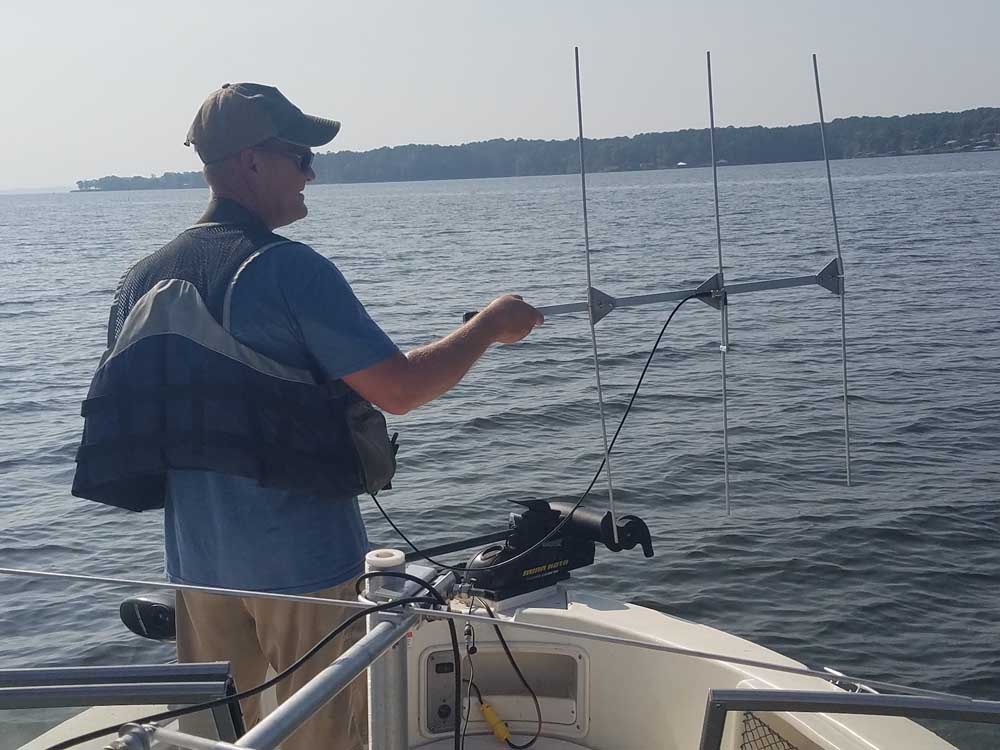In The Swim: Study Shows Cold Does Not Impact Bass That Much
Published 10:27 pm Saturday, March 27, 2021

- The Texas Parks and Wildlife Department continued tracking bass on Toledo Bend and Lake Fork through the fall and winter. While some bass made some moves, most stayed in what is their preferred habitat.
If there is anything coming from the Texas Parks and Wildlife Department bass tracking study on Toledo Bend Reservoir and Lake Fork, it is that the fish have a mind of their own.
“Most of our fish are homebodies,” explained Todd Driscoll, TPWD Inland Fisheries biologist at Toledo Bend. “About a third of our bass move very little. Their home range is about an eighth of a mile or less. They are really boring.”
Driscoll and his team began tracking 26 bass on the lake last spring. Some were lost to natural mortality and possibly harvest, but more than enough remained to provide an insight into the life of the fish.
Figuring that a bass’ life centers around feeding year-round and the spring spawn, Driscoll believes those bass staying in 12 feet of water or less are targeting sunfish and similar prey.
A second group of fish still being followed are a population of deep-water fish.
“There is another third that are moving around and it seems like their whole behavior is based on the shad forage base. They are suspended in 15 to 30 feet of water. They move more than the first group, but maybe have a mile or two home range. Their focus is shad and it seems they have learned over time they can just hang out and the shad will come to them,” Driscoll said.
Then there is the third group, also deep-water bass that are more nomadic in their activity.
“The last third are bass that are moving a lot. They are still feeding on shad, but it is educated speculation that they may tend to get focused on a single shad school and they seem to move on to those shad schools,” Driscoll said.
Those fish have been tracked up to five miles outside of Housen Bay which seems to be their home base to portions of the main lake that Driscoll described as the middle of nowhere where fishermen would never think to stop and fish.
So far Driscoll said movement does not seem to be impacted by changing seasons. Despite fishermen’s belief that they needed to fish different waters in different seasons, the Toledo fish never made mass migrations.
The same holds true at Lake Fork where 11 fish are being tracked in Birch Creek.
“The majority of our fish remained homebodies for the most part through fall and winter. As the vegetation went away, both from dropping water and cooler temps last fall, we were finding our fish suspended on timber or boat docks in 8 to 10 feet of water, almost exclusively,” said biologist Jake Norman.
He added that while one fish, the largest in the study, did move out to 30 feet of water, the rest were relating to creeks with timber, points with timber or flats. When the lake came back up in January, some of the fish moved into 2 feet or less water despite cold water temperatures.
Even February’s Big Chill did not impact most of the fish. Norman said eight of the fish were found within their normal home range just after the cold blast. The other three moved to the mouth of Birch Creek, including one that moved seven miles, but were all in 10 feet or less water.
Toledo Bend also has some long-distance swimmers, but their movement is not necessarily related to water temperatures.
“We have had two or three fish doing crazy things,” Driscoll said.
One is a 4-pounder that is commuting about five miles.
“Originally we marked it in the back of Housen. It stayed there two months. The lake was high and it stayed in the vegetation. The lake dropped and it moved five miles to a do-nothing, rounded clay bank where no one would stop to fish. For five months it never moved, and then in January it leaves where it was and moved to the back of Housen to about a 200-yard area from where we first found it. I thought it was staying to spawn. It stayed a month then moved five miles back to the outside of Housen. We went back the other day and it had moved back to the back. That is crazy,” Driscoll said.
Another has gone from the far back of Housen to the main lake and then down the river to Six Mile Creek before eventually returning to Bull Creek in Housen. If it swam in a straight line, that would be about 11 miles one way. Driscoll said it is hard to explain that expense of energy for something that lives to be an effective predator.
Driscoll said he hopes the transmitters survive another year so the study can look at the fishes’ movement one year to the next under different circumstances. For now, his takeaway is that there seems to be populations of bass that tend toward either shallow or deep water, and that there is no general rule to apply to bass behavior.






